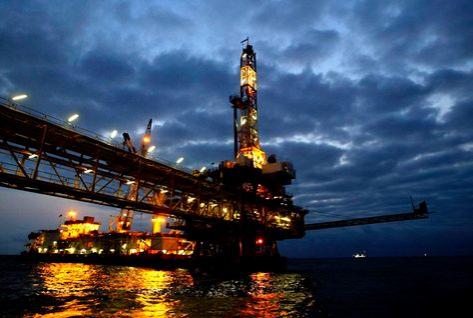
SAUDI: OIL & GAS DEMAND UP

Saudi Arabia abounds, of course, in energy resources, but a new source of demand is cutting into its oil output: domestic consumption, already high, is growing fast and threatens to crimp exports. Electricity use is increasing at about 7.5% annually, helping raise overall energy demand nationwide such that total needs by 2028 could reach 8.3 million barrels of oil equivalent per day. As a number of prominent Saudi officials have pointed out, at that point an average of 3 million barrels per day (mb/d) of crude oil might have to be diverted to the power sector, potentially cutting export revenue significantly and taxing world markets that the kingdom sees as its responsibility to keep well-supplied.
Gas provides around 43% of Saudi electricity, with fuel oil and diesel providing the rest. In recent years more and more crude oil has been diverted to the power sector, oil that might otherwise be sold internationally to boost national earnings. Since 2011, more than 500 000 barrels a day (500 kb/d) are burned for power generation, with peak demand in summer now seen topping 900 kb/d.
Demand is already running up against the kingdom's installed power generation capacity, which Middle East Economic Survey listed at 58.4 gigawatts (GW) as of 2013. It is also a challenge to provide enough fuel, with demand growth in electricity already having outpaced the capacity of the gas and fuel oil sectors to supply the power stations.
Heat and sunshine increase demand – and also supply
In 2011, Saudi Arabia's electricity demand was 210 terawatt hours, or about 7 420 kWh per capita, comparable to Mexico's total consumption but more than three times as high on a per capita basis. A significant factor is the climate: by far the greatest share of energy demand is in the building sector, at up to 80% of total power demand – 70% of which is for air conditioning. This adds to the seasonality of demand, with summer peak demand nearly twice the winter average.
While the short-term remedy to meeting the surging demand is increased gas output, Saudi Arabia intends to benefit long term from one aspect of the climate that boosts energy consumption: by tapping into solar power. The kingdom enjoys twice the direct normal irradiance that is available in the sunniest part of Germany, according to calculations by the US National Aeronautics and Space Administration.
Saudi Arabia aims to have 41 GW of solar power by 2032, 60% of it generated at concentrated solar power plants and the rest from solar photovoltaics such as rooftop panels, at a cost of USD 109 billion. The first gigawatt of solar power, to be installed by 2020, should save at least 1 billion cubic feet of gas per day, based on a combined-cycle gas turbine unit's output when operating at average summer conditions. In addition, wind power is to provide 9 GW for electricity generation and desalination, while the kingdom also has an ambitious target of 17.6 GW of nuclear capacity by 2032.
But solar power systems present challenges in hot dusty conditions: dust impairs operations, and efficiency falls at temperatures above 30 degrees Celsius. A number of research establishments in the Gulf region are working on ways to tackle these problems.
Regional and broader sharing of power
Finally, the region offers opportunities to bolster the power system. The northern Gulf grid connection that links Saudi Arabia, Kuwait and Qatar is designed to allow the sharing of power on an emergency basis, but can already enable the participants to reduce the spinning reserve that they need to maintain to ensure the stability of their grids.
The kingdom has plans with Egypt to set up a grid connection to take advantage of differences in each national system's daily demand peaks; the connection could operate at a level as high as 3 GW.
An even more ambitious plan under consideration is to share power on a seasonal basis with the Turkish and European grids to take advantage of the very large spare capacity the Saudi system has in the winter months. Such a system could supply as much as 10 GW to help meet European peak winter demand, while sending back power in the summer to cool the Gulf as demand peaks there.
iea.org




